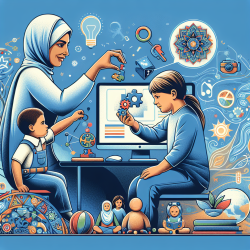Key Findings
The study involved 65 consumers who received TR services for AAC or alternative computer access, and their satisfaction was compared to 28 consumers who received in-person services. TR recipients rated their services highly, with a median score of 6 on a 6-point Likert scale. However, there were areas identified for improvement, particularly concerning technology reliability.
Practical Implications for Practitioners
For practitioners looking to enhance their TR service delivery, the study offers several actionable insights:
- Consumer Comfort: The majority of participants were comfortable with TR, suggesting that practitioners should continue to reassure and guide clients through the process.
- Cost-Effectiveness: TR saved consumers monetary expenses related to travel, making it a cost-effective option. Highlighting these savings can improve client buy-in.
- Technology Improvements: Issues such as low bandwidth and inconsistent internet access were noted. Investing in reliable technology and troubleshooting support can mitigate these challenges.
- Follow-Up Sessions: TR was found to be particularly effective for follow-up sessions. Practitioners should consider a hybrid model where initial evaluations are in-person, followed by remote sessions.
Encouraging Further Research
While the study provides promising results, it also underscores the need for further research to address the limitations of TR. Practitioners are encouraged to contribute to this growing body of knowledge by conducting their own studies or participating in collaborative research efforts.
Conclusion
Overall, consumer satisfaction with TR services is high, and the potential benefits in terms of accessibility and cost savings are significant. By addressing technological challenges and optimizing service delivery models, practitioners can enhance the effectiveness of TR services.
To read the original research paper, please follow this link: Consumer Satisfaction with Telerehabilitation Service Provision of Alternative Computer Access and Augmentative and Alternative Communication










